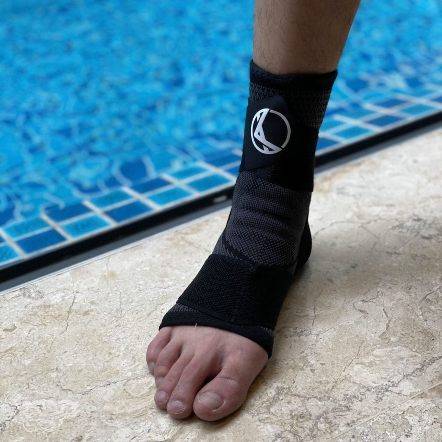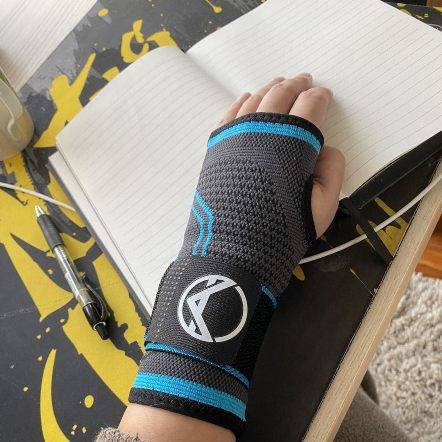
Compression Socks for Achilles Tendonitis Recovery
jUNE 12, 2023 | 3 Mins Read
TABLE OF CONTENTS
1. What is Achilles Tendonitis and What Causes It?
2. Are Compression Socks Good for Achilles Tendonitis?
3. How Long to Wear Compression Socks for Achilles Tendonitis Recovery?
4. What Is the Best Compression Level for Achilles Tendonitis?
5. How Long Does Achilles Tendonitis Take to Recover With Compression Socks?
6. Are There Any Side Effects of Wearing Compression Socks for Achilles Tendonitis?
7. What Other Treatments Can You Do to Improve Achilles Tendonitis Recovery?
8. When to See a Doctor for Achilles Tendonitis?
9. How to Choose the Best Compression Socks for Achilles Tendonitis?
Are you tired of the constant pain and discomfort caused by Achilles tendonitis? Do you find it challenging to engage in your favorite activities due to this condition? If so, you're not alone. Achilles tendonitis is a common overuse injury that affects many individuals, causing pain and inflammation in the back of the lower leg.
Fortunately, there is a solution that can help alleviate the symptoms and promote healing – compression socks.
Achilles tendinitis is characterized as an overuse injury affecting the Achilles tendon, which is the band of tissue connecting the calf muscles at the back of the lower leg to the heel bone. This condition commonly occurs in individuals who engage in activities that put excessive strain on the tendon, such as running. It is particularly prevalent among runners who abruptly escalate the intensity or duration of their runs.
The causes of Achilles tendinitis can be summarized as follows:
The causes of Achilles tendinitis are not limited to these factors alone. Other contributing factors may include improper footwear, poor running technique, and muscle imbalances.

Compression socks can provide support and aid in injury recovery, including calf strains and sprained ankles. Athletes, in particular, may benefit from achilles tendon compression socks during their recovery period, as they can help prevent additional injuries such as Achilles tendonitis.
By providing stability and promoting proper alignment, compression socks contribute to improved proprioception, reducing the risk of overexertion and further damage to the Achilles tendon.
Here are some of the key benefits offered by compression socks for Achilles tendonitis:
However, it's important to remember that compression socks are just one aspect of the overall treatment and recovery plan.
A comprehensive approach that combines the use of compression socks with appropriate treatment and preventive strategies is essential for optimizing recovery from Achilles tendonitis.
The duration of wearing compression socks for Achilles tendonitis recovery can vary but typically ranges from 6 to 12 weeks. The first 6-8 weeks are crucial as they require proper rest and immobilization of the foot and ankle.
During this time, compression therapy with the help of compression socks is recommended to support the healing process, improve blood flow, and reduce swelling and discomfort.
Expert tip:
Elevate your foot above the heart level when you're sitting or lying in bed to reduce inflammation.
The safe and tolerated level of compression for achilles tendonitis is 20 - 30 mmHg. Physicians also recommend this compression level for other venous conditions such as edema, swollen feet and varicose veins.
Read this guide on how tight should compression socks be.
Achilles tendonitis typically requires several weeks of home treatment for improvement. This treatment includes rest, compression therapy, applying ice to the affected area, and performing specific exercises.
In most cases, the rehabilitation process through exercise takes approximately 3 to 6 months. However, the recovery timeline may be prolonged if the tendon continues to be subjected to stress and strain.

To wear achilles tendon compression socks for Achilles tendonitis recovery, follow these steps:
Expert tip:
Wear compression socks first thing in the morning or during the daytime when you are most active.
Wearing compression socks for Achilles tendonitis generally does not have significant side effects. According to a study, the most commonly reported issue is skin irritation, which can occur due to the pressure and friction caused by the compression material against the skin. This can lead to mild redness and itching which are totally harmless.
Expert tip:
Keep the skin clean, dry and moisturized to reduce friction and irritation.

In addition to wearing achilles tendon compression socks, there are other treatment options available for Achilles tendonitis. These may include:
Check for the following signs and symptoms of Achilles tendonitis:
If any of these signs are present, then it is important to see a doctor for proper diagnosis and treatment. A healthcare professional can help identify the underlying cause of the Achilles tendonitis and recommend an appropriate treatment plan that may include medications, physical therapy, or even surgery in severe cases.
Your choice of compression socks should depend on certain factors, such as:






References
Author

Claire Evans worked as the content marketing manager at Koprez. Claire combined a background of writing and editing, marketing, and patient education to best serve consumers, fitness enthusiasts, athletes, and anyone who relies on the Koprez brand for helpful information.
Koprez® Featured Products


"I sprain my wrist super often, so I decided to try out this sleeve. This is game-changing! I've been using it for a while now, and my wrists feel amazing. I haven't gotten in any injuries since using it too. It just makes my wrists feel so supported."
Alexis A.


"Use this for my boxing training. It is a very comfortable brace and does not move out of position during skipping ropes and sparring sessions. I use it while running too. Probably the best brace I've purchased throughout the years. It is very flexible. Makes me look like a pro! :)"
Samuel L.


"I've just got back to running after a couple of years of being plagued by injury. These compressions socks are helping give me peace of mind while I build up my distance again. They are the perfect level of compression, super comfy, and very high quality. Feel great while on a run, and looks great in the orange colour I have!"
Dave R.


"I have a weak ankle, and the Koprez ankle sleeve has been a lifesaver. Wear it every day. Super breathable and comfortable. Like wearing a cool sporty looking sock!"
James F.


"This is the best knee sleeve I've ever tried. It's now a must-have for all my exercises. A few years ago, I had an accident that damaged my knees, but with Koprez I can be active again with no knee pains at all. It's been truly amazing!"
Alex M.


"One of the best purchases I've ever made. It fits your legs all the way from top to bottom, great snug fit, gives you support and definitely helps during rehab and training."
Rafael A.


"I had a minor elbow injury, and Koprez sleeve was super supportive and definitely helped me recover faster. I still use the sleeve to prevent further injury. So far, so good. Very comfortable and does not feel hot at all. Highly recommend!"
Corey B.


"It's really been a game-changer for me. It allows me to exercise a lot longer than I used to. Now my knees don't hurt, and they're not uncomfortable at all."
Mike P.


"Great product!!"
Harold


"I have carpal tunnel, and this brace has helped me work pain-free. Love the materials, and I can feel my wrists slowly getting better, even when I don't wear them!"
Christopher J.


"I wanted to try out these sleeves to improve my squats and deadlift in the gym without worrying about injuring my knees. They stayed up throughout the entire gym session, and my knees feel super supported. Now I can do what I love for years to come. "
Corbin C.